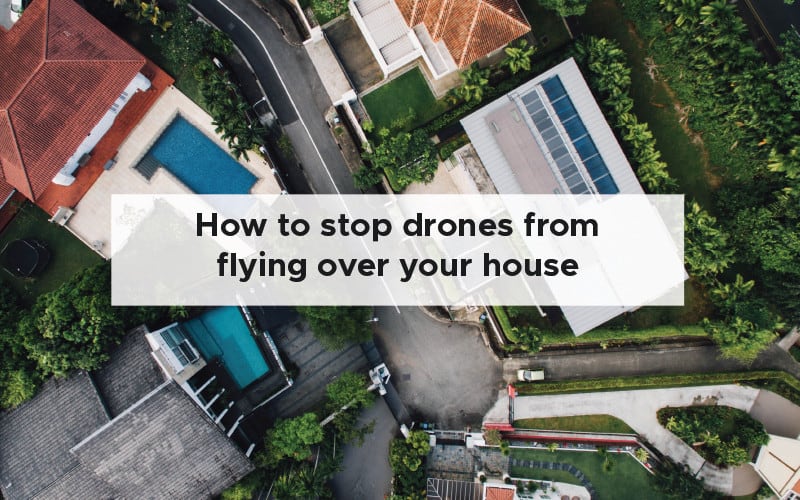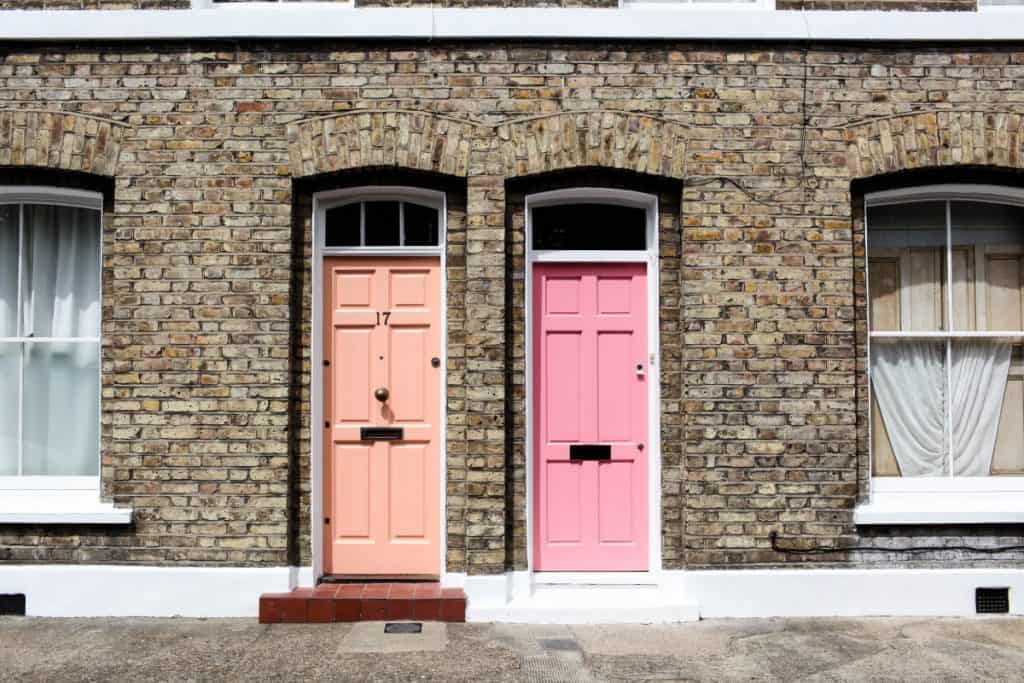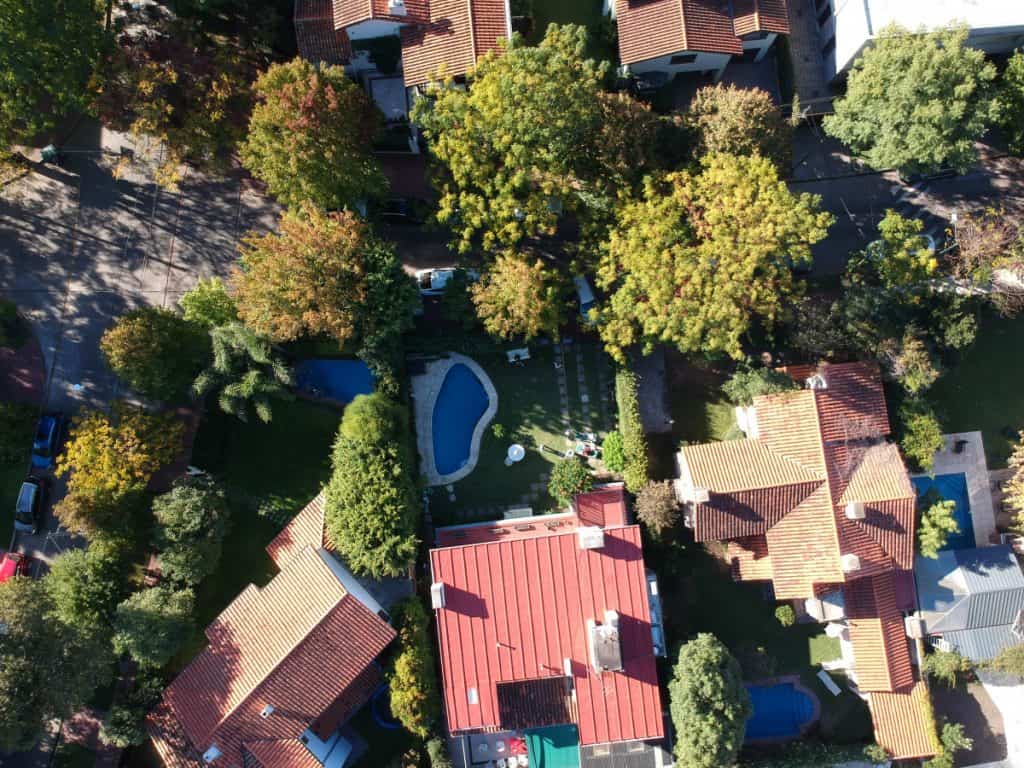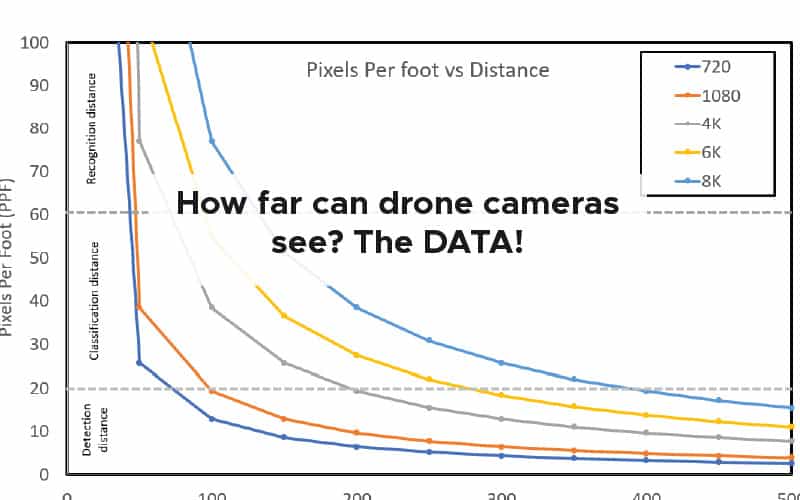Having a neighbour with a drone can be relatively frustrating because of the potential privacy breaches and the noise associated with flying a drone. As more and more people purchase drones and use them to explore the areas around their house is becoming more and more likely that your neighbour owns a drone. It isn’t a terrible outcome, and there are some proactive things to make sure that your neighbour with a drone doesn’t become a massive hassle for you all the other neighbours around them.
If your neighbour has a drone and they are continually flying over your property, you can ask them nicely to refrain from flying over your house, you can report any potentially illegal drone activity to local authorities, or you can file a complaint against them.
That being said, drone flights often only last 30 to 40 minutes, and it is unlikely that they will be hovering directly above your house. Many people are surprised by the limited amount of information drones can capture from a large distance. In this article, we will also be going over what drones can see when flying above your house – hopefully putting your privacy security concerns at ease.
Noise complaints and harassment are completely different issues, and they can be taken care of through several official channels.
Why you may want to approach your neighbour
Remaining silent when you have an issue with your neighbour is generally not the best course of action. Quite often, small issues can become inflated when we do not seek to resolve them. Approaching your neighbour and politely speaking to them may be your best course of action, but what are they doing to upset you? Being clear about that means that you can approach them confidently.
Here are a few reasons you may want to approach your neighbour if they own a drone and are bothering you.
They fly over your house
Having a drone fly over your property can be very frustrating. Perhaps your neighbour has a drone, and they fly it over your house regularly.
Can they do that?
I hope you can speak to them and get them to consider your privacy and preference for them not to fly over your property. Unfortunately, some neighbours and drone pilots do not listen to this request, and you may find yourself in a very frustrating stand-off with a drone pilot.

Can my neighbour fly a drone over my house?
If your neighbour is flying over your house regularly, likely, they are not breaking any laws. As long as the drone is not harassing you by getting too close to people or infringing on any trespassing and privacy laws, they are allowed to fly directly above your house.
A drone that repeatedly flies over your house may be considered a trespass unless it flies at a very high altitude.
Asking your neighbour to fly to the maximum allowable altitude before flying over your house may be an option to keep the peace.
My DJI Mavic air is hardly visible or audible from a height of approximately 120 m.

Noise complaints
There is no doubt that drones are relatively noisy when you are close to them. Depending on the drone, it may be low harm or a high pitched sound. The smaller the drone, the more irritating the noise as the propeller blades displace less air and cause a much higher pitch.
Drones are noisy because they have a very high propeller rotation frequency which goes through the air creating a constant pitch.
The propeller blades pass over the drone’s arms, which increases the amount of turbulence, making the drone noisier and more irritating. The ultimate determiner of the noise that a drone makes is the propellers’ length, pitch, and depth.
When I am out flying my drone, I am also amazed at how much nicer the larger drones sound when they fly by.
You’ll be pleased to know that drones can be made quieter.
Their drone has landed on your property
In rare cases, drones can land on their own if they run out of battery or face other issues such as GPS and return to home errors.
If your neighbour is flying a drone and is trying to return to their property, you may end up with a drone landing on your roof or property.
A drone landing on your property is almost certainly due to the miscalculation of the drone pilot.
If the drone pilot has initially flown out with a tailwind, they may underestimate the amount of power required to return to their property.
If you are concerned about this happening regularly, I can assure you that they are just as embarrassed to come and ask you for access to recollect their drone.
Privacy issues
Many of today’s drones have cameras installed on the front-facing surface. These drones often move on a gimbal to look straight down and approximately 10° above the horizon.
When near a drone, your privacy must be taken into account. In an area where drones fly regularly, you might wonder if drones can hear your conversations or identify you or other people.
You may be concerned that the drone is spying on you, your family, or your property somehow. Understanding exactly what a drone can see may put your mind at ease.
Understand what a drone can see
I have written a full article on how far drone cameras can see and make out at certain differences. I have done all of the calculations to understand exactly what your neighbour can see when they are flying around your house. Click here to be taken to the data and my calculations.
The average drone camera operating at a high definition can recognise people up to 50 feet away. Up to 100 feet, the camera can classify objects, and past 100 feet, likely, the camera can only detect movement and not determine objects or recognise individuals.
The feature that determines how far a drone can see and the sorts of detail it can pick up is determined by the number of pixels per foot that the drone camera can resolve at a given distance.
If the drone is getting close to you and your property, they will almost certainly be able to identify you as an individual. Ensuring that they are flying high and far away from you is the only way to ensure that your privacy is kept to a maximum.
Now that you understand exactly why you may want to approach your neighbour, you can do to stop them from flying over your property.
What you can do
Speaking to your neighbour is the first option you should consider if you want to stop them from flying over your property. Escalation only works if you have approached the drone pilot first and asked them to stop flying over your property. After that, there are ways that you can report them for a variety of different issues.

Ask them to not fly over your property
The first thing you should consider if you want to stop someone flying over your house is to speak to the pilot to ask them to stop flying over your property.
Quite often, our neighbour or someone in the neighbourhood is flying their drone over our property. Unless you live near a place of natural beauty, it is very likely someone in your neighbourhood causing the issues.
I have often found that drone interactions with the general public can get heated very quickly. Approaching your neighbour and asking them to stop flying over your property could quickly turn into an argument about laws and local regulations. Even if they are permitted to fly above your property, it still may be your preference that they do not.
Asking politely involves following these steps:
- please make sure you are clear about exactly what you do not want them to do. Do you want them to stop flying over your property completely? Or do you not want them to do it at certain times?
- Asking directly for what you want and watching your tone will help. Understand that this person is not doing something to annoy you, and giving them the benefit of the doubt when approaching will mean your tone is friendlier.
- Be prepared for no. When we ask something of someone, we are not often prepared to hear no. Our egos can quickly get in the way and start a fight. If they say no, it is time to look at other options. You can also tell them your next steps if they do not stop flying over your property.
Report any illegal drone flying to the police/FAA
You can report your neighbour for any potential illegal drone flying.
You can report them to your local law enforcement agency or directly to the Federal aviation body. Before flying a drone, they must go through a simple test to ensure that they understand all of the rules and regulations around flying safely and securely.
Buying a flying gadget means that you will be flying your gadget in airspace populated by planes and helicopters.
Getting familiar with the drone-flying rules and regulations yourself will allow you to identify any potentially illegal activity you can report.
Common drone rules across many countries include:
- flying below 400 feet
- keeping your drone within line of sight
- not flying in restricted airspace
- landing when near other aircraft
- not flying over groups of people
- not flying over stadiums or sporting events
- staying away from emergency responses
- being in control at all times and not being under the influence
- flying only one drone at a time.
File a complaint
One of the last options you have if someone does not stop flying over your property is to put in several complaints to local law enforcement officers and council officials.
In the United States, you can file a complaint by visiting this webpage.
In many countries, you can lodge a complaint based on several criteria. These criteria include reporting someone for the unsafe operation of the drone, noise complaints, and privacy and security concerns. A lot of jurisdictions enable you to lodge complaints online, by phone, or by post.
If you suspect someone of breaking the drone flying regulations, you should make a complaint as soon as possible. You may notice that drones are flying closer than 30 m to people. They may be flying in restricted airspace or at night, overpopulated beaches, parks, houses, sports ovals, or public venues.
Recording the incident on your phone will also help you provide evidence to the local authorities.

Do not be tempted to do this:
In most of the United States of America, it is not illegal for someone to fly over your house. The ultimate legal question is whether or not the drone can be considered a trespasser and if shooting down a drone with a gun or a net constitutes reasonable force.
It is illegal to deliberately cause harm to an unmanned aerial vehicle (UAV). Using a projectile to shoot down a drone to cause damage to private property may cause you to bear the cost of replacing the drone and any losses caused by your actions.
If someone is trespassing on your property, you are allowed to use reasonable force to try to know them. The drone was causing a significant privacy invasion and trespassing, so the officer used reasonable force to protect himself and others from the drone.
Ask to join in!
This article assumes that you are annoyed by the presence of a drone on your neighbour’s property. Of course, one of the best ways to understand the joys of flying a drone is to ass to get involved. By asking your neighbour for a demo (they will be very happy to show you), you may better appreciate why people love flying their drones so much.
By asking for a test flight, you will understand exactly what your neighbour can see and the typical flight path they choose over your property. You never know, you could end up joining them in their hobby!
Summary
This article has gone over everything you need to know if your neighbour has a drone and you want to get them to stop.
Speaking to your neighbour and getting an understanding and appreciation of what their drone hobby is, what they can see, and expressing to them how it may impact your life is one of the best ways to keep harmony in the neighbourhood and also get a better understanding of the drone hobby for yourself. Should they not listen to your requests, you can escalate the issue by reaching out to local law enforcement with evidence of them breaking drone flying laws and regulations.
There are plenty of places online where you can file complaints against specific drone missions and pilots.
I hope that doesn’t get to this point and you can resolve your issues together.
![What to do if your neighbour has a drone [The steps]](jpg/what-to-do-if-your-neighbour-has-a-drone-768x480.jpg)




